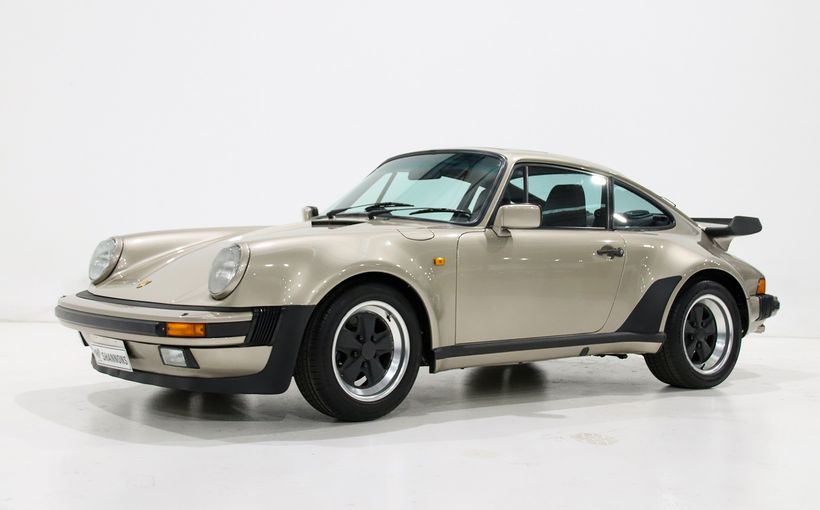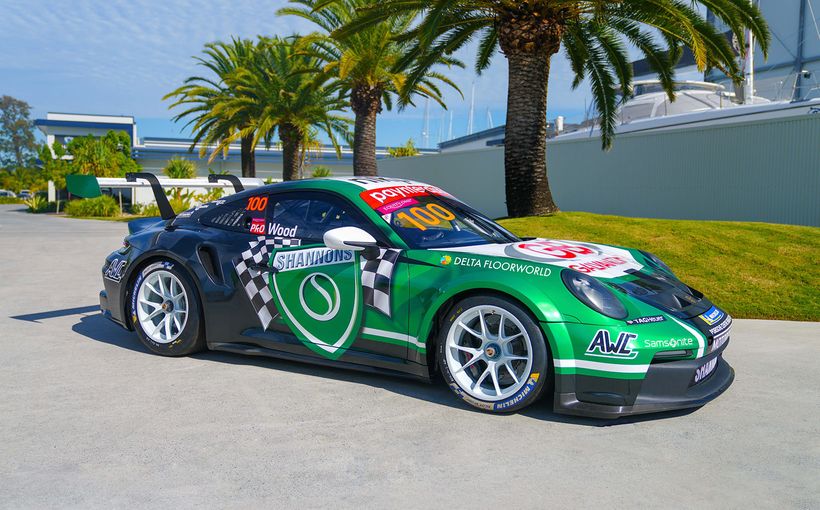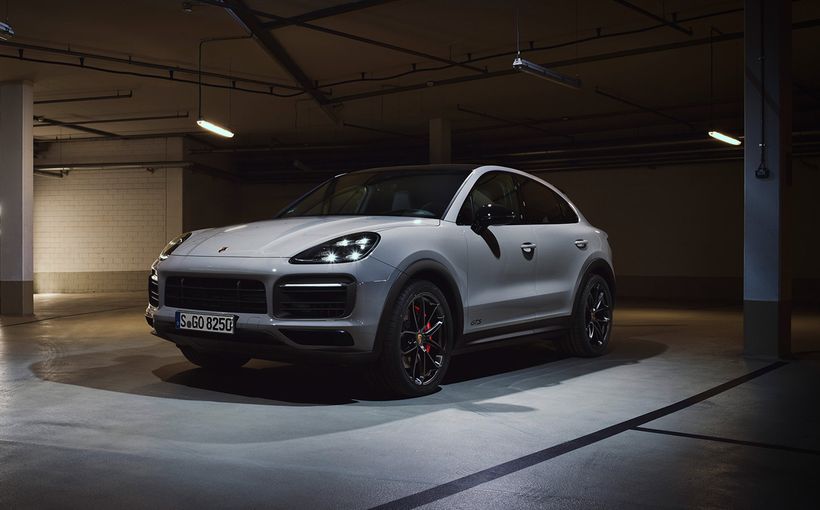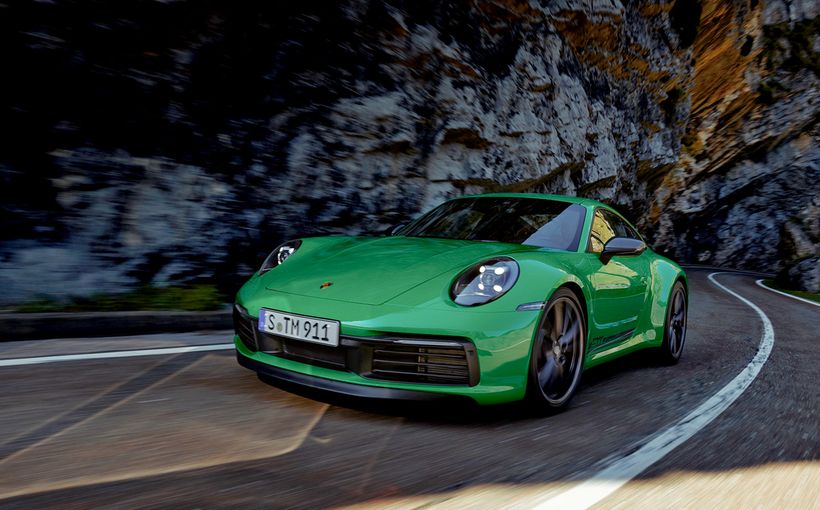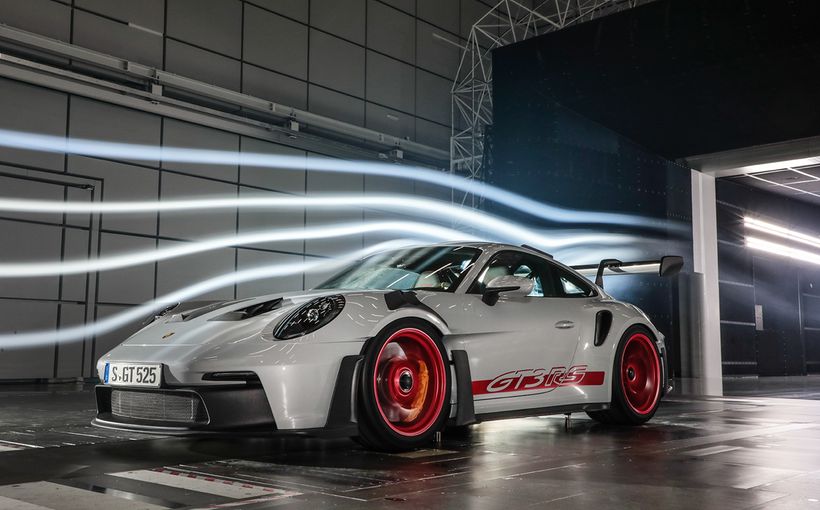Alpine A110: The Gallic Alternative Porsche

Hero Image: ©Sean KLINGELHOEFER
From its foundation by Jean Rédélé in 1954, the French marque Alpine (pronounced ‘Al-peen’) has had a great deal in common with Porsche. While Porsche had intended to replace its 911 with front-engined models, its customers took a different view, so it’s fair to say that for both manufacturers, the defining elements of its sports cars have been: a high efficiency and relatively small capacity engine located behind the driver, an excellent power to weight ratio, a slippery body, notable agility and unique character.
Indeed, going back even further there is much shared between Ferdinand Porsche’s Volkswagen and the Renault 4CV, which drew on its key design elements. For Porsche and Alpine, these slow, humble people’s cars were like scale models inspiring them to build the real thing! (It’s really quite a paradox to consider that in the immediate postwar years, a rear-mounted engine was almost continental European small car orthodoxy, while at the other extreme open-wheeler racing cars were still front-engined; now the reverse applies.) What Volkswagen was to Porsche, Renault would become to Alpine.

Image: © Yannick Brossard
In much the same way that Porsche’s product planners can never reimagine the seminal 911 in a completely different mould from the original, when Renault (who took complete ownership of Alpine in 1973) revealed its new-generation Alpine A110 in 2017 – the first example of the marque since 1995 – the template had been set by the original model of the same designation.

Image: retromotive.com.au (Retromotive magazine)
Alpine’s most famous model, the A110 (1961-1977), like the Porsche 911, was successful in both racing and rallying – a master of tarmac and dirt alike. The 911 has grown with the years and the new-generation A110 is intended to be a direct rival for the Porsche 718 Cayman and was benchmarked against that car; this was never a secret.

Image: retromotive.com.au (Retromotive magazine)
Arguably, there is an even more telling parallel between Alpine and Abarth. In many respects, what Jean Rédélé would soon become to Renault, Abarth was modelling at Fiat. Carlo Abarth (b. 1908) ran the Cisitalia works team from 1947 until the company’s collapse in 1949. Abarth then took over Cisitalia’s assets and founded his eponymous company. The association with Fiat began in 1952. Carlo Abarth took the 1953 1100 103-series as the basis of his first hot Fiat, but later turned his attention to the rear-engined 600. The pursuit of an outstanding power to weight ratio, starting with as light a car as possible was the Abarth imperative.
Rédélé came into the business not via managing a race team but essentially through his business skills. Born in 1922, he took a degree in business and economics in Paris during World War Two. While studying, he undertook work experience at Renault and prepared a report for management analysing the company’s work practices. It seems that Pierre Dreyfuss, then vice-president of the nationalised Renault (and later president), was impressed with this report because he invited Rédélé to put his theories into practice. At 24, he became Renault’s youngest dealer principal, located in Dieppe.

Image: Unknown
His passion though was motor racing and doubtless the dealership paved his way. Early success when he won the second ever event in which he competed, the Rally Dieppe, further enhanced his standing within Renault, and he was offered a factory-prepared 4CV for the 1951 Monte Carlo Rally. He finished fourth in his class.
Rédélé’s business acumen meant he could identify a profitable niche as the French automotive market gradually put postwar austerity behind it. He understood that there would be plenty of young enthusiasts just like him who would be keen to buy a modestly priced factory special.
That works 4CV was the starting point of this inspiration, but he thought it was too heavy and insufficiently sleek. He commissioned Giovanni Michelotti of the famous carrozzeria to design a special body to be slipped over tuned 4CV mechanicals. Rédélé already understood that ‘racing is the best way to test production cars and victory is the best sales tool’.
When he launched his own company in 1954 his own recent victory in the Coupe des Alpes was foremost in his consciousness:
I chose the name Alpine for my company because it epitomises the pleasure of driving on mountain roads. The most fun I ever had behind the wheel was driving through the Alps in my 4CV, and it was essential for me that my customers should experience this same level of enjoyment in the car I wanted to build. In this respect, the name Alpine is symbolic and entirely appropriate.
Jean Rédélé was unaware that the Rootes Group had launched a sports car bearing the Alpine moniker just the previous year, an historic fact that has caused some confusion over the decades.

Image: car-from-uk.com
After a series of styling exercises, the first Alpine production car was launched in 1955. This A106 was a two-door hardtop constructed on a 4CV chassis with 4CV running gear, including the special 1063cc edition of what had started as a 750cc engine. It weighed some 560kg (compared with 620 for a standard 4CV). The A106 had a passing visual resemblance to the Porsche 356.
Then came the A108 in 1960, initially only as a convertible but soon as a hardtop. No fewer than four different versions with six engines were offered, so the economies of scale could hardly have worked well! The most successful A108 in competition was the Berlinette A108 Tour de France with its 998cc Dauphine Gordini engine developing 70 horsepower and running through a five-speed gearbox. (Renault was also favoured by the ministrations of Amédée Gordini, who would create the most evocative improved French sedans of the 1960s and 1970s.)

Image: retromotive.com.au (Retromotive magazine)
Just two years later, Rédélé introduced his exciting new A110. Running gear came from Renault’s new R8 which had four-wheel disc brakes and a five-bearing engine with crossflow heads and represented a dramatic advance on the Dauphine.

Image: retromotive.com.au (Retromotive magazine)
Despite its promise, the R8-based A110s proved unduly troublesome. Reinhard Klein, author of the brilliant and definitive Rally Cars, says:
Sadly, despite much promise on international rallies and numerous victories on French national events, the new Alpine was not totally reliable. And it suffered from a continual ‘catch-up’ on engine size between the production engines and what was needed to win at an international level.
The breakthrough came in 1967 when Renault supplied Alpine with the 1470cc engine from the 16 and the car was known as the A110 1500. Klein opines:
Meanwhile, the drivers had to soldier on in international events with the homologated 1300cc. Gerard Larrousse led both the Geneva and Coupe des Alpes rallies in 1967 and would probably have won the Monte Carlo Rally of 1968 had not someone shovelled snow on the Turini and caused him to crash.
In the course of 1968, Renault allocated its entire competition budget to Alpine and the team was renamed Alpine Renault. At the end of the calendar, a proud new edition of the A110 was released with a highly tuned, dual-Weber-equipped 1565cc 16TS as well as all the running gear required for competitiveness at the highest level; the bad news was that homologation for international events would not come until 1970, meaning that the 1300cc cars still struggled on.

Image: retromotive.com.au (Retromotive magazine)
In 1971, Alpine Renault lured Ove Andersson away from Ford and won the Monte Carlo Rally outright. The following year, it won the International Championship for Makes.
With 150 brake horsepower and a kerb weight of just 680kg, the A110 had an exceptional power to weight ratio and was the lightest of all contemporaneous rally cars. Its radiator was at the front of the car which improved cooling.
While French blue might be the typical Alpine colour, the lovely deep yellow of the 1600S variant shown here suits the car to a tee. Many Renaults of the period were finished in a similar livery. Nathan Duff took these excellent images and they are supplied to the Shannons Club courtesy of Retromotive magazine (they appeared in edition #7)

Image: retromotive.com.au (Retromotive magazine)
The A110’s fibreglass body sat on a central steel tube with front and rear sub-frames; the use of fibreglass facilitated the production of ultra-lightweight cars with stronger shells and panels for events like Sanremo and Acropolis. The all-independent suspension featured double dampers at the rear and the suspension worked as well when raised for rough roads as when set low for tarmac.
In 1972 Alpine launched the 1.8-litre edition of the A110 with 175 brake horsepower and weighing just 730kg when set up for gravel rallying.
In 1973 the A110 won the inaugural World Rally Championship. This was the year when Renault bought the remainder of Alpine and retained Jean Rédélé as president. While rallying had always been Alpine’s major focus with this car, it was successful in every other type of motorsport in which it competed, including circuit racing and even ice racing.
When invited by Reinhard Klein to nominate his favourite rally car, Ove Andersson chose the A110. So, too, did Audi works driver Michèle Mouton, who said, ‘Although I had my best results driving Audis, the car with the most emotion for me has to be the Alpine A110.’
In 1976 Renault merged Alpine and Gordini to create Renault Sport and entered Formula One the following year. In 1978 an Alpine A442B won the 24 Hours of Le Mans. Thus in the late 1970s Renault’s motorsport future looked rosy.

Image: autoevolution.com
But the Alpine marque, it already seemed – and at such an exciting time for Renault Sport – was to have no future. In 1977 the A110 was superseded by the A310 which had been available since 1971. Bigger and more luxurious, the A310 was intended to be a 911-rival. Then in 1991 came the A610, which sold in low numbers and led to the cessation of Alpine production cars in 1995.
So, when Renault management decided to relaunch the Alpine brand, it made the most sense to reimagine the A110, perhaps the most iconic production car ever associated with the Renault brand name.
In December 2017 the new-gen A110 was launched to an international media contingent in Marseilles. It was immediately greeted as a worthy rival to the Cayman. The A110 received high praise for its design, dynamics, performance and light weight. At 1080kg (with fluids but without factory options), it was a remarkable 260kg lighter than a Cayman, but what a sign of the times! Very few contemporary cars of any type weigh as little as that, but this second-gen A110 weighs 50 per cent more than the 1972 1.8-litre model.
Parked alongside the original, the new car looks almost big but by today’s standards it’s close to tiny at 4.1 metres long, 1798mm wide and 1252mm high. Perhaps the closest comparison is between BMW’s MINI and the Issigonis original!
Unlike cars such as the Chrysler PT Cruiser, Volkswagen New Beetle and even BMW’s MINI, the new A110 is not so much a retro car but a new interpretation of the original theme. It was designed by Jun Okazaki.
The A110’s special aluminium spaceframe is made in Dieppe, where Jean Rédélé sold Renaults six decades ago. The panels are produced in Italy.

Image: wheels.ca
Purists quickly lamented the lack of a manual gearbox – instead it has a seven-speed Getrag dual-clutch unit, while one or two noted with disappointment that the 1.8-litre turbocharged engine would be shared with Renault Sport’s Megane RS. But none complained about a zero to 100km/h time of 4.5 seconds (similar to a Cayman S) and electronically limited 250km/h top speed. Maximum power is 185kW backed by 320Nm of torque.
The mass is concentrated near the centre of the car with the fuel tank aft of the front axle. But it still has quite a rearward weight distribution at 44:56. A go-kart feeling results in part from the amidships location of the engine ahead of the rear axle. Lovely, quick steering and a surprisingly compliant ride are highlights in what is one of the great driver’s cars on offer in 2020. For such a stumpy little machine, a coefficient of drag of just 0.32 is impressive.
The debate continues to rage about whether or not Alpine has produced a better sports car than the Cayman. Many say it is more exhilarating to drive, but it does not exude the pure high-quality feel of the Porsche, nor a similarly evocative exhaust note.
There is something more niche – more esoteric, even – about the appeal of the Alpine brand, one that many reasonably well-informed enthusiasts are barely aware of.
Renault Sport has made quite a name for its trademark hot hatches over the last couple of decades and the new A110 promises to bring more lustre to Renault’s reputation as a maker of efficient, charismatic cars. Only 100 cars per year can be imported to Australia (due to an agreement among manufacturers to limit sales of cars not equipped with side airbags; the new A110’s lightweight sports seats meant no airbags!) but there is every indication that all of these will be eagerly spoken for. This is the first time Alpines have ever been sold here.
Increasingly, German marques dominate the luxury market, while the French have effectively abandoned the field. In recent years, Germany, Italy and Japan have shared the sports car market. While it seems improbable that the French automotive industry will ever delight us again with a top-shelf Citroën, we do at least have an exciting new Gallic sports car. And there could surely be no 1970s sports car as worthy of being reimagined as the fabulous Alpine A110.



